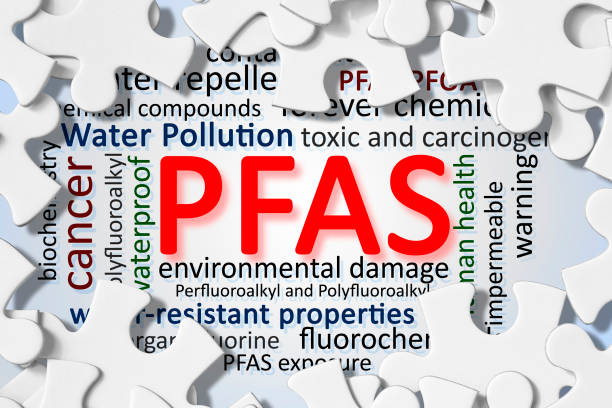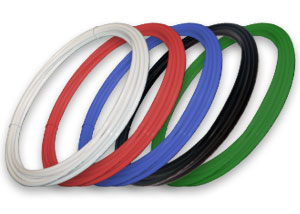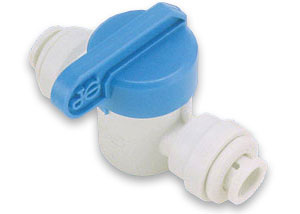Water filtration experts dive into the unfortunate effects of microplastics. Microplastics can be seen as the ultimate contaminant or toxin in drinking water, and the fight to remove them is not easy.
What are Microplastics, and Why are They Leaving Scientists Puzzled?
Microplastics are tiny, microscopic plastic particles measuring from 5 millimeters (mm) to 1 micrometer (μm). One micrometer equals 0.001 mm or about 0.000039 of an inch. These particles are tiny bits of plastic that break off larger plastic items such as oil containers, laundry detergent containers, food containers, and anything in a plastic container. Plastic breaks down on land and water into smaller fragments due to weathering, mechanical actions, or degradation, creating microplastics.
To make matters worse, there are also nanoplastics, anything below one micrometer to only billionths of a meter. Let’s put this size to some scale:
- A grain of salt= about 60 microns
- A red blood cell= 7 or 8 microns
We are talking about a particle so unbelievably tiny that it’s been hard for scientists to detect these nanoplastics until recently. Water filtration experts believe that they will never be able to be removed entirely from drinking water.
Since many parts of the world, including many towns in the U.S., do not have recycling programs, plastic containers end up in landfills and, worse, our waterways (lakes, streams, oceans, and residential wells). Even scarier, many so-called recycling programs claim to recycle items but don’t, and plastic floods waterways even more.
Microplastics and nanoplastics are found in our drinking water, breathable air, food, the ocean’s bottom, the top of Mount Everest, and the animal and human bloodstream. One medical study found that 80% of participants had microplastics in their bloodstream.
Water Filtration Experts Break Down Microplastics (No Pun Intended) and The Dangers They Present
Scientists have divided microplastics into two main categories: primary and secondary microplastics.
Primary microplastics are intentionally manufactured in small sizes for consumerism. For example, microbeads are used in personal care products like face and body scrubs, and microfibers are used in clothing. These particles are released into the environment, such as wastewater treatment plants.
One would wonder why a wastewater treatment plant would allow these particles to flood the system. It is vital to remember that the size of these particles can be so exponentially small that no system or device can guarantee they will be 100% removed, especially nanoplastics.
Secondary microplastics are created from the plastic breakdown of larger plastic sources (bags, bottles, packaging materials, etc.). Over time, these plastics degrade into smaller fragments, eventually becoming microscopic plastic pieces the size of sand or smaller through weathering, photo-degradation, or physical abrasion.
The most common sources of microplastics include:
- Plastic pollution in oceans and water bodies
- Road dust and tire wear particles
- Industrial discharges and effluents
- Agricultural runoff containing plastic debris
These microplastic sources contribute to microplastics in the environment, including our drinking water, seafood, and even the air we breathe.
Health Impacts of Microplastics and Nanoplastics
Manmade microscopic plastic particles seep into various ecosystems, including soil and the tissues of marine organisms. Marine life is especially at risk because they often mistake microplastics for food. This can lead to internal injuries, malnutrition, and even death of aquatic organisms because microplastics result in bioaccumulation and biomagnification.
Microplastics can move up the food chain, affecting humans who consume seafood. Potential effects on human health due to microplastics include inflammation, oxidative stress, hormonal disruptions, and the introduction of harmful chemicals and bacteria. Long-term impacts are still under investigation, but current evidence underscores the need for immediate action.
Water Filtration Experts’ Advice: Reduce Microplastics Pollution
Reducing microplastic pollution requires concerted efforts from individuals, communities, and technological advancements.
- Reduce single-use plastics, such as bags, bottles, and straws. Opting for reusable alternatives like cloth bags, stainless steel water bottles, and biodegradable straws can make a significant difference.
- Proper waste management can minimize microplastic pollution. Ensuring correct disposal and recycling of plastics can prevent these items from filtering into oceans and landfills, where they break down into microplastics over time.
- Raising awareness about microplastic pollution can do wonders. Educating others about its impacts and encouraging sustainable practices can lead to broader change. Community clean-up events and local initiatives can actively contribute to reducing microplastic pollution.
- Technological advancements play an essential role in combating microplastic pollution.
Microplastics in Water and Everyday Life
Water filtration experts and scientists believe that microplastics in drinking water are a growing concern due to their potential health and environmental impacts. Studies have found microplastics in various water sources, including tap water, bottled water, and even remote locations like the Arctic. Although the long-term effects of consuming microplastics are still being studied, evidence suggests they could adversely affect human health.
Microplastics can introduce unknown contaminants and dangerous pollutants into drinking water and carry harmful substances (chemicals, heavy metals, etc.) that can harm our health. Additionally, microplastics can accumulate in aquatic environments, posing risks to marine life and ecosystems.
Microplastics are prevalent in everyday products, posing potential risks to human health and the environment. They can be found in personal care items like exfoliating scrubs, toothpaste, and body washes, which often contain microbeads. These microbeads can wash down the drain and eventually end up in water bodies.
Household cleaning products, laundry detergents, and synthetic clothing contribute to microplastic pollution. Many cleaning products contain microplastic fibers released during washing or rinsing. Synthetic fabrics like polyester and nylon shed when they are washed. These microfibers that shed add to the microplastic pollution in water systems.
To reduce personal exposure to microplastics, avoid products that contain microbeads or microplastics. Look for natural alternatives or products labeled as microplastic-free. Choose natural cleaning products and laundry detergents, such as ones made with vinegar, castile soap, and washing soda. Buy natural fiber clothing like cotton or linen instead of synthetic materials.
Water Filtration Experts Predict the Future of Microplastics
Microplastics have become a growing concern, prompting ongoing research and scientific advancements to understand their impact on the environment and human health. These particles are found in various forms, such as fibers, fragments, and microbeads.
Scientists are continuously studying microplastic sources, distribution, and potential risks. This research aims to understand their long-term effects on ecosystems, wildlife, and human health and to develop effective mitigation and prevention strategies.
Government regulations and policies are critical in addressing the issue of microplastics. Many countries have implemented measures to limit microplastics in consumer products and industrial processes. These regulations intend to reduce microplastics’ release into the environment and promote using more environmentally friendly materials.
Businesses also play an important role in addressing the issue of microplastics. They can reduce plastic use, implement recycling programs, and invest in eco-friendly alternatives. By adopting sustainable practices, businesses can help mitigate microplastic pollution and promote a healthier environment.
Water Filtration Experts Emphasize Any Filtration is Better Than None
Water filtration systems can significantly help address the issue of harmful contaminants, including microplastics, in drinking water but certainly not completely remove them. It is crucial to remember that any company making claims that a water filtration system or product will completely remove microplastics is dangerous and inaccurate. Instead, different water filtration systems can help remove contaminants, including some microplastics.
Reverse osmosis systems and activated carbon filters can help remove microplastics from water but cannot altogether remove them. Speaking with a water filtration expert about what type of water system you have is key. There are many different types of water filtration systems:
- Whole house
- Under-sink
- Countertop
- UV sterilization
- Well water systems
- Commercial filtration
- Various water filters for specific sediments, minerals, and contaminants
Contact a water filtration expert today to discuss the right water filtration system for your home or business.

















